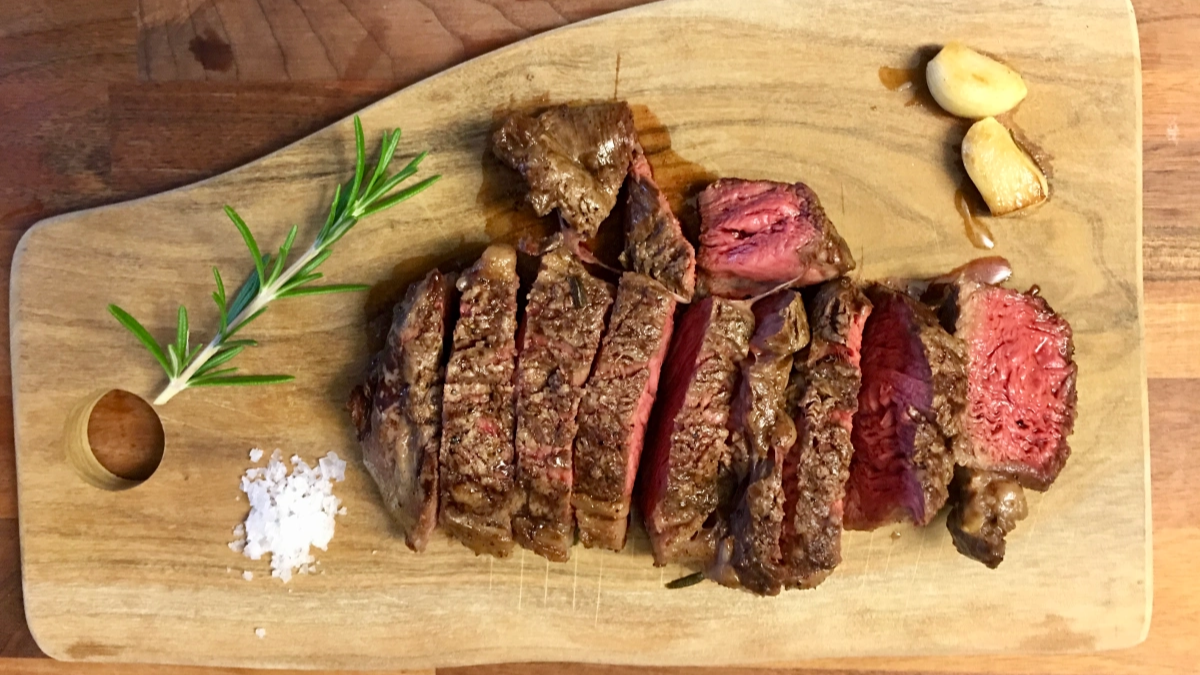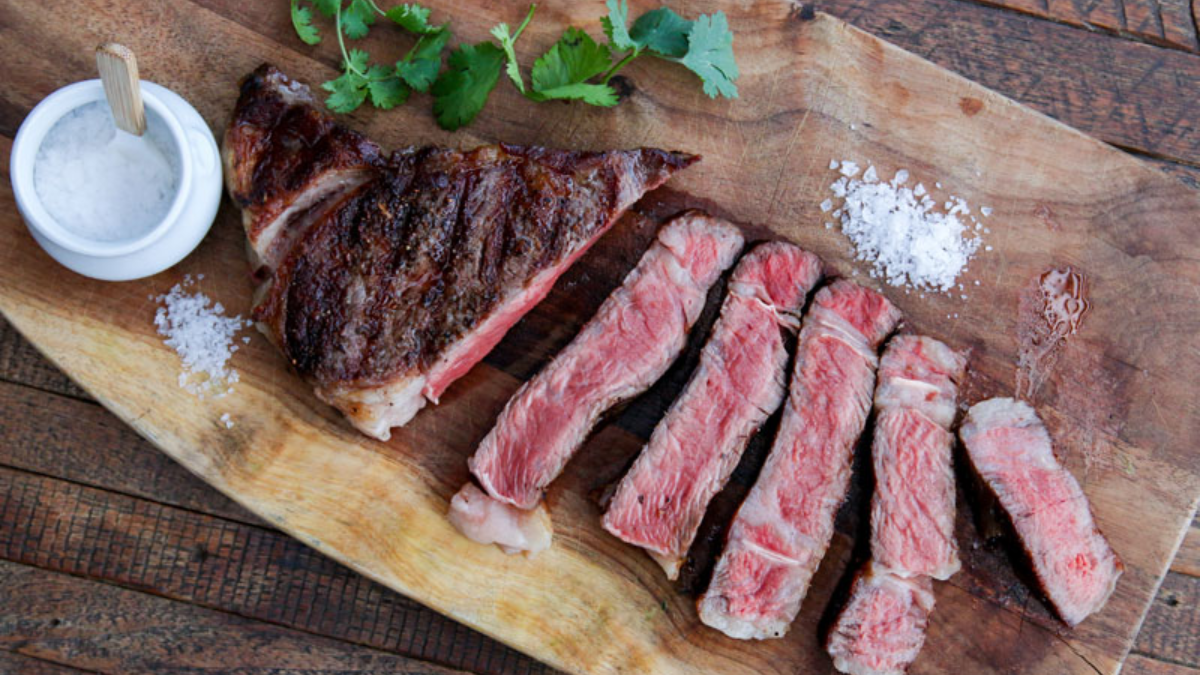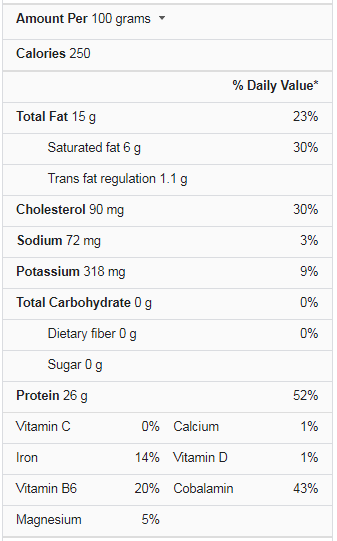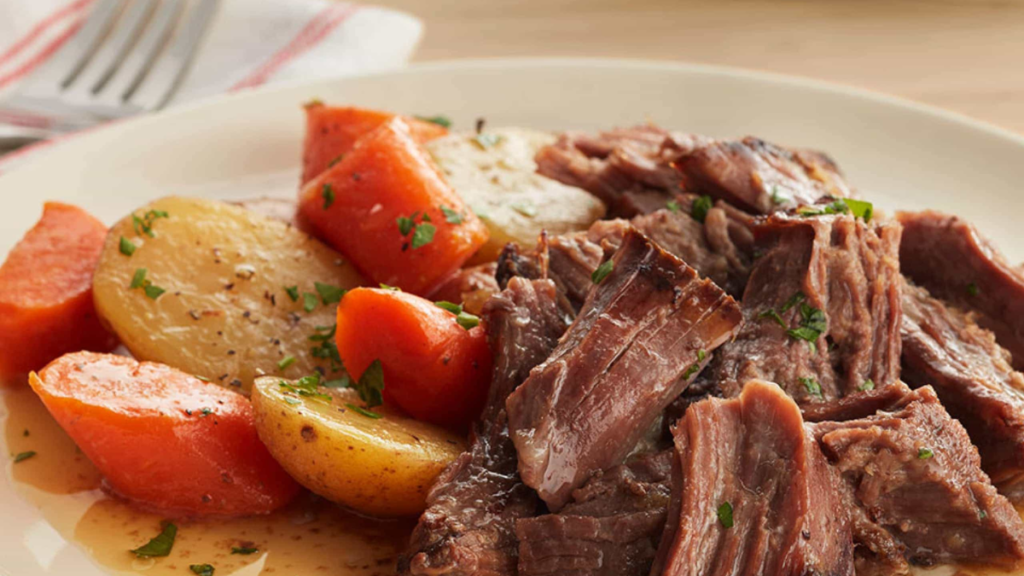Slow cooking should be one of your go-to techniques in the kitchen if you enjoy the kind of rich, flavorful beef that melts in your mouth and leaves you craving more. Cooking low and slow gives excellent adaptability, ease, and exceptional depth of flavor every time, from straightforward casseroles and stews filled with flavor to more rich curries, a fast chili, soups, and so much more.
We’ll examine the best beef cuts prepared in a slow cooker. Everything can be simmered, including big chunks of meat, stews, and soups. Braising is a technique used in slow cookers that include cooking things covered in liquid for a long time at a low temperature. This technique for tough cuts rich in collagen, bone, and connective tissue can achieve the best results.
Beef Nutrition Facts
What is Beef?
The culinary term for meat from cows is beef (Bos taurus). Aurochs were first hunted by humans, who later domesticated them. Since then, various cow breeds have been developed expressly for the type or amount of meat they produce.
Beef is currently the third most popular meat consumed worldwide, behind pork and chicken, and China, Brazil, and the United States were the top three beef-producing countries as of 2018.
Beef can be prepared in several ways; cuts are frequently used for steak, which can be cooked to varying levels of doneness, while trimmings are often ground or minced, as seen in most hamburgers.
Protein, iron, and vitamin B12 are all present in beef. High consumption of processed red meat and other red meat is linked to a higher risk of colon cancer and coronary heart disease. As the leading cause of deforestation and the agricultural product with the highest greenhouse gas emissions, beef negatively influences the environment.
What are the Beef Cuts?
Here are the different kinds of beef cuts:
Shank
The shank is a muscle constantly used and is situated on the lower abdomen and leg of the cow. As a result, the meat is lean and rugged, with only an average of 7% fat.
- These cuts require manual tenderizing (with a meat mallet or grinder), marinades to help break down fibers and impart flavor, and low and slow cooking methods to keep lean meat moist while allowing fibers to break down.
- Slow cookers, electric pressure cookers, and braising are good choices. Ground beef from this section is manually tenderized during the grinding process and will be used for lean ground beef mixes. It should be noted that the thinner the ground beef, the more critical it is to cook with liquid to avoid a rubbery texture.
- Typical for Osso Bucco, beef shanks, ground beef, stews & soups, beef tips and gravy, curries, and pot pie.
Brisket
Brisket is a lean, tough cut of meat that may be transformed into something delicious when appropriately cooked because it comes from the cow’s lower chest, another commonly used muscle group.
- This brisket is thin with two sub-primal cuts: brisket point and flat cut. You might hear the slang terms just “points and flats.”
- The point comes to a tapered end and is rounder with marbling throughout, while the flat has a thick fat cap but lean meat underneath. Flat brisket is the most common.
- Both cuts require prolonged, moist heat to add flavor and create succulent bites. Therefore, the best cooking methods are wet smoking, slow cooking, and braising.
- Commonly for pastrami, corned beef, BBQ brisket, burnt ends, and braised brisket.
Rib
This section is extensive and covers the center back of the cow. This area is well marbled, with a hearty flavor, and is naturally juicy. It includes prime rib, ribeye, back ribs, and rib caps.
- They are all best prepared at quick, high, and dry heat, whether in the oven, smoker, or grill.
- They are commonly used for individual steaks, rib roasts, and BBQ ribs.
Short Plate
The small plate region, which is on the belly right behind the ribs and is surrounded by brisket and flank steak, is home to short ribs, hanger steak, and skirt steak. These slices each require a distinct cooking technique due to their higher fat content.
- Hanger and skirt steaks are very thin, can be marinated or rubbed, and are best cooked with a high heat sear.
- Short ribs are best prepared using a pressure cooker or braising.
- They are commonly used for recipes requiring thinly sliced pieces of beef like stir fry, fajitas, sandwiches, and pasta.
Flank
On the belly, behind the short plate, is the flank. It is well renowned for its flank steak and London broil, even though the latter is a cooking technique rather than a specific cut. They have a lean, thick, and chewy texture.
- They tenderize well with a meat mallet, or long stints in a marinade help to break down fibers and make them more tender. It is also strongly recommended that they be cut against the grain to shorten fibers while chewing.
- They are commonly used for salad, sliced roasts, and pasta.
Round
The spherical section near the cow’s hind quarters is typically a less expensive cut, but if you know how to handle them properly, you can obtain the most meat for your money. They consist of the eye of round, top round, bottom round (rump roast), and sirloin tip.
- These are best cooked with moisture, liquids, and low and slow heat. Slice them thinly against the grain to reduce fibers’ lengths.
- They are commonly used for pot roasts, deli meats, and larger roasts.
Chuck
This is where the tender chuck roast, the most popular cut for pot roasts and other dishes that call for shredded beef, is produced. The flat iron, top blade, country-style ribs, and shoulder cuts are also located here.
- Chuck roasts are often labeled different things depending on geographic location. You might see them labeled chuck eye roasts, chuck pot roasts, chuck roll roasts, or merely pot roasts.
- They are best cooked long and slow, allowing the collagen to break down and tenderize the meat.
- The flat iron is also known as the blade steak or “butcher’s cut” because it is one of the tastiest pieces often kept by the butcher to enjoy himself. All it requires is a quick season and sear on high heat.
- They are commonly used for chicken fried steak, cube steak, BBQ ribs, pot roast, and steaks on the grills.
Loin
This region, which is also low activity but heavy in fat, is found on the cow’s lower back. More than 20 sub-primal cuts are available here, including the top loin, bottom loin, sirloin, and tenderloin. Porterhouse, T-bone, filet mignon, New York strip, sirloin steak, chateaubriand (beef tenderloin), and tri-tip are the most popular cuts of meat.
- These cuts have high marbling making them super tender without much prep.
- They cook best with quick, dry heat like a grill or hot skillet or just a scorching oven.
- They are commonly used for filet mignon, beef wellington, grilled or seared steaks, skillet meals requiring tender meat that cooks quickly, steak kabobs, and stir fry.
Which Cut of Beef is Best for Slow Cooking?
Since the top, bottom, and eye round of the hind quarter are slimmer and tend to maintain their shape better after cooking. Many people choose to use these cuts. While these cuts can still benefit from long cooking, the lack of marbling means the flavor is not as robust as that of fore quarter beef.
Let’s now examine the best beef cuts for slow cooking:
Beef Chuck
As a result of its frequent use, this area of the animal is frequently more challenging than other cuts. However, it softens and has a rich, meaty flavor when simmered. The thickest gristles and most extensive fat seams must be removed before cooking, but if you purchased your meat from a respectable butcher, they should have already done this. Depending on the cuisine you wish to serve, your butcher can prepare beef chuck in various ways.
Shank of Beef
As the name implies, the beef shin or shank is essentially the animal’s leg. This incision is particularly difficult because it puts a lot of strain on the muscles that support the animal’s weight and allows it to walk. It is, however, perhaps one of the most excellent cuts you can get off the animal with the proper amount of cooking. The beef shin can be prepared in slices, dice, or even slices with bone linked, just like the beef chuck. Like beef chuck is cooked, beef shin that has been cut into small pieces and diced must cook for more extended since the muscles take longer to break down and become tender.
Beef Brisket
This beef cut, which comes from the animal’s chest, is particularly heavily marbled with fat and has a thick layer of fat on the outside. To get rid of the fat and an elastic-like membrane that run through the brisket, quite a bit of cutting is necessary. The brisket’s fibrous muscle disintegrates while being cooked and can then be cut into slices or shredded. Brisket is a slice of delicious meat frequently used in corned beef and pulled beef recipes.
Mock / Chuck Tender
Another muscle that crosses the top of the blade bone is the chuck tender, sometimes known as the fake tender. The cut’s name refers to its resemblance to the beef tenderloin, not its tenderness. It is a thick band of collagen-like tissue running through a solid and lean muscle. Thus slow cooking is necessary to break that down. This cut is excellent for braising in liquid when cut into medallions or pot-roasted whole.
Why Slow Cook your Food?
Slow cooking beef ensures luscious softness, one of its best features. Using stricter cuts of meat, which are naturally more robust since they come from the animal’s heavily utilized muscles, can nonetheless result in luscious morsels that practically slide off your fork.
Why? Since boiling in liquid at a low temperature for a long time tends to stimulate the breakdown of connective tissues, mainly the protein collagen, When meat is simmered, collagen transforms into gelatin, giving the flesh a luscious, supple feeling. When meat is cooked quickly, collagen makes it challenging.
Cheaper, fatty cuts of beef can also be beneficial for slow cooking since the fat keeps the meat from drying out and adds flavor.
5 Top Tips for Slow Cooking Success
To get the best result with your beef in the slow cooker, follow these five tips for success:
- Brown the beef first. If you’re not using a slow cooker, do this in the pot you’ll be cooking in (a cast-iron flameproof casserole dish with a tight-fitting lid is best) to ensure you retain all the juices and achieve maximum flavor.
- When seasoning, add just a little at the start and, if still required, adjust to your taste before serving. As slow cooking encourages the reduction of liquid, the flavors can become very concentrated.
- Don’t overfill the pot. This prevents steam from escaping, leading to too much liquid in the pool.
- Keep the lid on at all times. Slow cooking times require the building up of consistent heat to cook meat and make it deliciously tender. The liquid should tremble at the center of the pot — not bubble vigorously.
- For optimal results, you should make the dish the day before you plan to eat it to enhance the flavor and tenderness.
Conclusion
Because ground beef is so adaptable, a slow cooker and ground beef are a fantastic match. Slow cookers are great for stewing meat. The beef sauce, meat pie filling, and chili are all delicious and simple to make in your slow cooker. Those meals can also be kept warm in the slow cooker if you’re attending a chili cook-off, potluck, or family barbecue. You can make a tasty slow cooker chili by browning your ground meat before adding onions and peppers. Before adding them to the slow cooker, add three cans of your favorite beans and tomatoes. The cooking times for this chili are either four hours on hot or six to eight hours on low.



